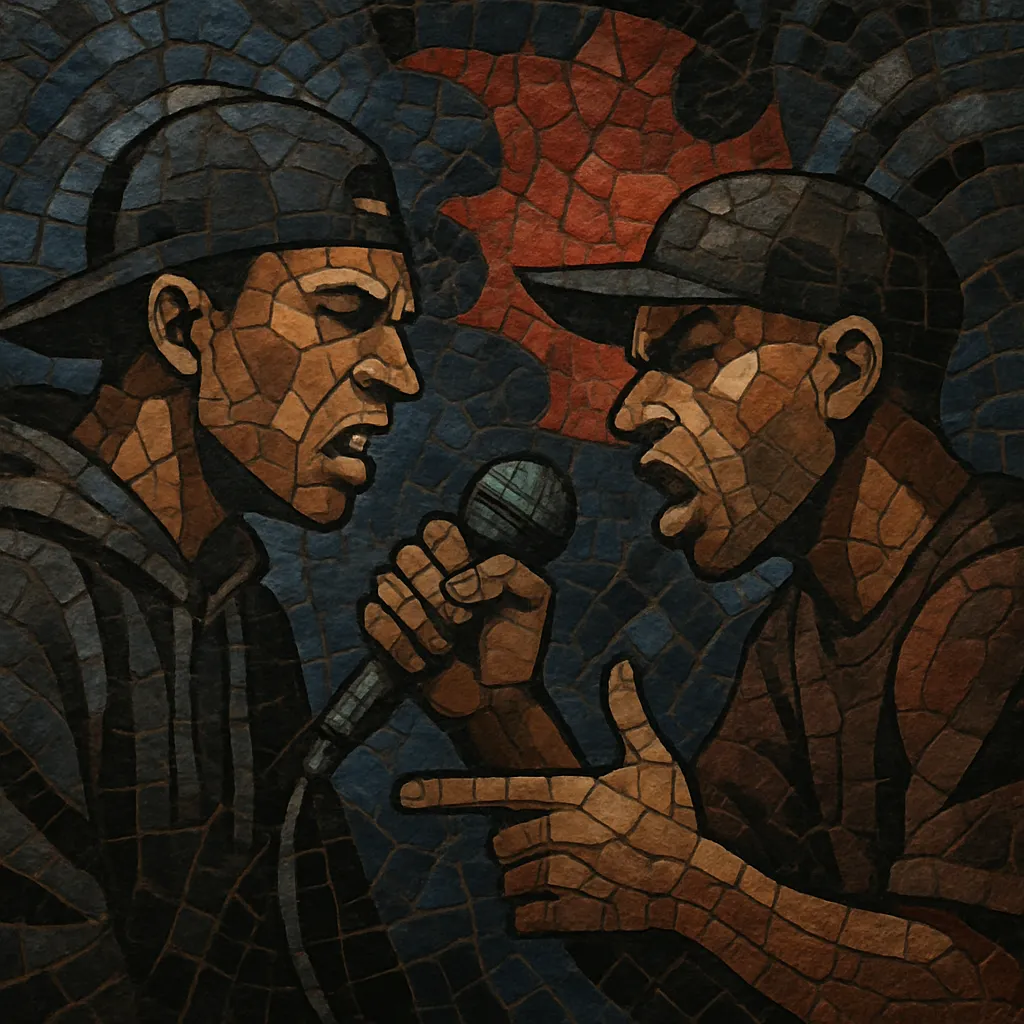
Battle rap is a competitive branch of hip hop where two MCs face off to outperform each other with lyrics, delivery, and crowd control. The focus is on punchlines, intricate multisyllabic rhyme schemes, wordplay, name flips, personals (biographical attacks), angles (narrative frames against an opponent), and on-the-spot rebuttals.
It exists in two main formats: freestyle battles over a beat (improvised or loosely prepped) and the modern a cappella league style, which features pre-written rounds with theatrical delivery and tightly structured setups and haymakers. Judges or audience reactions typically decide the winner, but cultural impact and quotability also matter.
Tone ranges from aggressive and confrontational to humorous and ironic, with performance skills—projection, pacing, charisma, and stage presence—being as crucial as lyrical technique.
Battle rap grew out of the earliest days of hip hop in New York. Park jams and club nights featured MCs competing for crowd supremacy, continuing African American traditions such as the dozens and signifying, and echoing Jamaican sound system clashes. A pivotal moment was Kool Moe Dee vs. Busy Bee in 1981—often cited as the first famous recorded battle—where technical lyricism and direct disses replaced crowd-hyping party routines.
Through the 1990s, freestyle battles over instrumentals flourished at open mics, college radio, and events like Scribble Jam (Cincinnati). This era elevated improvisational skills and rapid punchline density. Notable champions like Eyedea and Juice set standards for off-the-dome prowess. TV and tournament formats (e.g., 106 & Park’s “Freestyle Friday,” Blaze Battle 2000, Jumpoff’s World Rap Championships) expanded visibility and codified competitive structures.
Around 2008–2010, the format shifted toward pre-written a cappella battles popularized by leagues like Grind Time Now (US), King of the Dot (Canada), and Ultimate Rap League/URL (US). Longer, beatless rounds rewarded layered writing, personal angles, intricate schemes, and theatrical delivery. Stars such as Loaded Lux, Murda Mook, Hollow Da Don, Arsonal, Dizaster, and The Saurus defined the modern era, while platforms like YouTube enabled global audiences and archival longevity.
Battle rap became a worldwide phenomenon, with major scenes in the UK (Don’t Flop), the Philippines (FlipTop), Russia (Versus), Australia (Got Beef?), and beyond. The culture refined norms—coin tosses, three-round structures, time limits, crowd etiquette, and judge criteria—while evolving techniques like rebuttals, multis, name flips, and angle stacking. Livestreams, pay-per-view events, and social media highlight reels now shape careers, with quotables and moments driving cultural impact.

